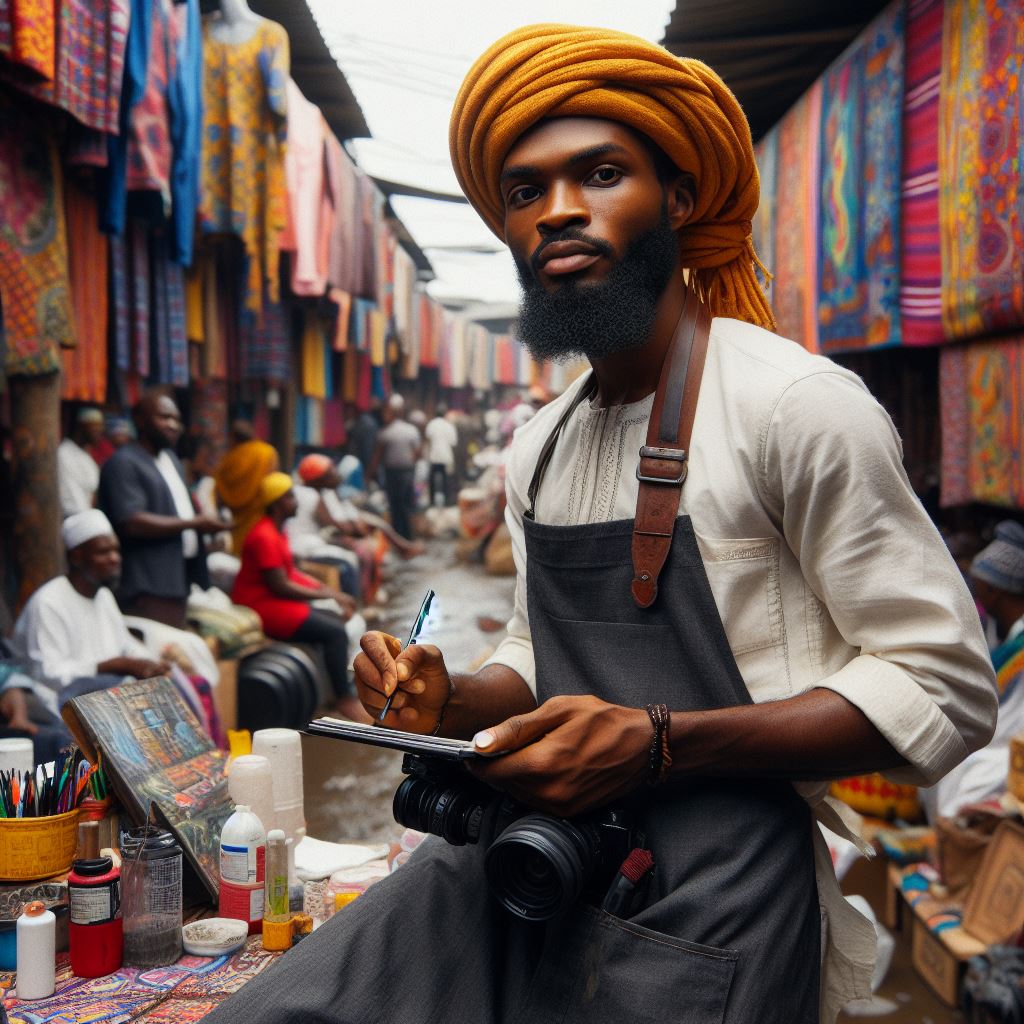Introduction
Graphic design involves creating visual content to communicate messages.
It combines art and technology to convey ideas effectively.
Graphic designers use typography, imagery, and color to create visually appealing designs that capture attention and convey messages.
Historically, graphic design has roots in ancient art forms and print media.
Early examples include illuminated manuscripts and printmaking techniques.
The advent of the printing press in the 15th century revolutionized graphic design, making mass communication possible.
With the Industrial Revolution came advancements in printing technology and advertising, further shaping the field.
The importance of graphic design in the digital age cannot be overstated.
It shapes how information is presented and consumed online.
Good design improves communication, making complex information accessible and engaging.
In a digital world, graphic design is essential for capturing attention and conveying messages efficiently.
In summary, graphic design is a dynamic field that has evolved with technological advancements.
Its role in the digital age is critical for effective communication and branding.
Embracing graphic design’s principles and techniques can significantly enhance the impact of digital content.
Evolution of Graphic Design in the Digital Age
Graphic design has undergone a significant transformation in the digital age, moving from traditional techniques to digital tools and technologies.
This shift has revolutionized the way designers create and communicate their ideas.
Transition from Traditional to Digital Graphic Design
In the past, graphic designers relied on manual tools such as pencils, pens, and paper to create their designs.
They would spend hours refining their work by hand, often using techniques like drawing, painting, and collage to bring their visions to life.
With the advent of digital technology, designers now have access to a wide range of tools and software that allow them to create more complex and dynamic designs.
Digital platforms like Adobe Creative Cloud have become essential for modern graphic designers, providing them with powerful tools for image editing, typography, and layout design.
Today, digital graphic design offers greater flexibility and efficiency, allowing designers to experiment with different styles, colors, and effects without the limitations of traditional methods.
This has led to a new era of creativity and innovation in the field of graphic design.
Impact of Technology on Graphic Design
Technology has had a profound impact on the practice of graphic design, enabling designers to work faster, more collaboratively, and with greater precision.
The widespread use of computers, tablets, and smartphones has made it easier for designers to create, share, and distribute their work across various platforms.
One of the most significant impacts of technology on graphic design is the ability to create responsive designs that adapt to different screen sizes and devices.
This has become essential in the age of mobile technology, where people consume content on a variety of screens, from smartphones to tablets to desktop computers.
Furthermore, technology has democratized the field of graphic design, making it more accessible to a wider audience.
With online tutorials, courses, and design communities, aspiring designers can now learn the craft from anywhere in the world and connect with other professionals in the field.
Popular Software Used in Digital Graphic Design
- Adobe Photoshop: Widely regarded as the industry standard for image editing and manipulation.
- Adobe Illustrator: Ideal for creating vector graphics and illustrations.
- Adobe InDesign: Essential for layout design and publishing projects.
- Canva: User-friendly graphic design tool for creating social media graphics, presentations, and more.
- Sketch: Popular among web designers for creating digital interfaces and prototypes.
These software tools have become indispensable for graphic designers in the digital age, providing them with the power and flexibility to bring their ideas to life in new and innovative ways.
As technology continues to evolve, the field of graphic design will undoubtedly continue to change and adapt to new possibilities and challenges.
Essentially, the evolution of graphic design in the digital age has opened up a world of possibilities for designers, allowing them to push the boundaries of creativity and communication.
With the right tools and techniques, designers can create visually stunning and impactful designs that captivate audiences and inspire action.
Read: Communication Arts: Balancing Theory and Practice
Elements of Graphic Design
Importance of color, typography, and layout in graphic design
Color
- Color evokes emotions and helps create visual interest in a design.
- It can convey meaning, establish hierarchy, and create a cohesive look.
- Understanding color theory is essential for effective use of color in graphic design.
Typography
- Typography is the art of arranging type to make written language readable and appealing.
- The right choice of fonts can enhance the message and create a specific tone.
- Typography can also help establish hierarchy and guide the viewer’s eye through the design.
Layout
- Layout refers to the arrangement of visual elements in a design.
- It determines the overall structure, flow, and organization of content.
- A well-designed layout can improve readability, usability, and overall aesthetics.
Examples of Successful Graphic Design Projects
- Apple’s minimalist product packaging design that focuses on simplicity and elegance.
- Coca-Cola’s iconic logo and branding that instantly evoke brand recognition.
- Nike’s dynamic and energetic marketing materials that reflect the company’s ethos.
How to Create Visually Appealing Designs Using These Elements
- Start by understanding the purpose and target audience of the design project.
- Choose a color palette that conveys the right emotions and aligns with the brand.
- Select typography that complements the message and enhances readability.
- Experiment with different layouts to find the most effective arrangement of elements.
- Balance the use of color, typography, and layout to create a harmonious design.
- Solicit feedback from peers or clients to refine and improve the design.
Generally, the elements of color, typography, and layout are essential in graphic design to create visually appealing and effective designs.
By understanding the importance of these elements and how to utilize them successfully, designers can create impactful and memorable designs that resonate with their target audience.
Read: How to Apply for Communication Arts Programs
Role of Graphic Designers in Today’s Society
Various Career Opportunities for Graphic Designers
- Graphic designers can work in various industries such as advertising, marketing, and web design.
- They can also pursue freelance opportunities or work in-house for companies looking to enhance their visual presence.
- With the rise of digital media, graphic designers can explore roles in animation, user experience design, and digital photography.
Importance of Branding and Marketing in Graphic Design
- Branding is essential for creating a strong visual identity that resonates with target audiences.
- Graphic designers help businesses develop brand assets such as logos, typography, and color schemes.
- Marketing collateral like brochures, social media graphics, and advertisements are also essential in promoting a brand’s message.
Collaborations between Graphic Designers and Other Professions
- Graphic designers often collaborate with marketers, copywriters, and web developers to create cohesive campaigns.
- They work closely with clients to understand their goals and translate them into visually appealing designs.
- By partnering with other professionals, graphic designers can maximize the impact of their work and deliver results that drive business growth.
Read: Famous Nigerian Alumni of Communication Arts Programs

Find Out More: Key Theories in Comparative Politics: Nigerian Context
Delve into the Subject: Prominent Historical Events in Nigerian Curriculum
Trends in Graphic Design
Graphic design is a dynamic field that is constantly evolving to keep up with the latest trends and technologies. In this section, we will explore the current trends in graphic design, the influence of social media on these trends, and forecast future trends in the industry.
Current Trends in Graphic Design
- Minimalism: Clean and simple designs that focus on essential elements.
- 3D and realistic illustrations: Adding depth and realism to designs.
- Bold typography: Experimenting with different fonts and styles to make text stand out.
- Dark mode: Designing interfaces with dark color schemes for a modern look.
- Geometric shapes: Using geometric patterns and shapes to create visually appealing designs.
The Influence of Social Media on Graphic Design Trends
- Social media platforms like Instagram and Pinterest showcase graphic design trends.
- Designers often look to social media for inspiration and to stay relevant.
- Social media has accelerated the pace at which trends come and go in the industry.
- Visual content on social media has become more important, driving the need for eye-catching graphics.
- Designers must adapt to the fast-changing landscape of social media to remain competitive.
Forecasting Future Trends in the Industry
- Augmented reality and virtual reality are expected to play a larger role in graphic design.
- Personalized and interactive designs that engage users on a deeper level.
- Environmental sustainability will become a key focus in graphic design practices.
- Artificial intelligence and machine learning will streamline the design process.
- Inclusive design practices to ensure designs are accessible to all users.
As graphic design continues to evolve in the digital age, designers must stay informed about current trends, leverage social media for inspiration, and prepare for the future by embracing new technologies and practices.
By adapting to these changes, graphic designers can create innovative and impactful designs that resonate with audiences in a rapidly changing landscape.
Read: Communication Arts: Job Prospects and Salaries
Explore Further: Specializations in Mass Communication Degrees Nigeria
See Related Content: How to Write an Economics Research Paper in Nigeria
Learn More: Influential Nigerian Economists You Should Know
Challenges Faced by Graphic Designers
Graphic designers face a number of challenges in the digital age when it comes to creating visually appealing and effective designs.
These challenges can range from dealing with client expectations and feedback to staying relevant in a highly competitive industry.
Let’s explore some of the common obstacles that graphic designers encounter:
Dealing with Client Expectations and Feedback
One of the biggest challenges for graphic designers is meeting the expectations of their clients.
Clients often have specific ideas and visions for their projects, and it can be difficult to translate those ideas into a design that meets their expectations.
Designers must be able to effectively communicate with clients, understand their needs, and provide solutions that satisfy their requirements.
Feedback from clients can also be challenging to navigate.
Designers must be open to receiving constructive criticism and be willing to make changes based on client feedback.
This can sometimes be a delicate balancing act, as designers need to maintain their creative vision while also meeting the demands of their clients.
Staying Relevant in a Competitive Industry
The graphic design industry is highly competitive, with new trends and technologies emerging regularly.
Designers must constantly adapt and evolve to stay relevant in this fast-paced environment.
This can be challenging, as designers need to stay up-to-date with the latest design software, techniques, and trends in order to remain competitive.
Additionally, designers must be able to differentiate themselves from their competitors and stand out in a crowded marketplace.
This requires a strong portfolio, excellent networking skills, and a unique creative vision that sets them apart from the competition.
Balancing Creativity with Practicality in Design Projects
One of the key challenges for graphic designers is finding the right balance between creativity and practicality in their design projects.
Designers must be able to think outside the box and push the boundaries of creativity while also ensuring that their designs are functional, user-friendly, and meet the needs of their clients.
This can be a tricky balance to strike, as designers need to be creative and innovative in their designs while also considering factors such as usability, accessibility, and budget constraints.
Designers must be able to think strategically and make informed decisions that balance creativity with practicality in order to create successful design projects.
Therefore, graphic designers face a range of challenges in the digital age, from dealing with client expectations and feedback to staying relevant in a competitive industry.
By navigating these obstacles with creativity, flexibility, and strategic thinking, designers can overcome these challenges and continue to create impactful and effective designs in today’s digital landscape.
Find Out More: Community Efforts to Revitalize Nigerian Languages
Delve into the Subject: Colonial Archives and Research Resources in Nigeria
Discover More: Criminology Student Experiences in Nigeria
Conclusion
Graphic design remains indispensable in the digital age, serving as a vital conduit for communication.
Its evolution from traditional print media to digital platforms underscores its adaptability and relevance.
Recap of the importance of graphic design in the digital age highlights its multifaceted role.
From web design to branding, it shapes user experiences and builds brand identities.
Graphic design ensures effective communication and engagement in an increasingly digital world.
For aspiring graphic designers, the future holds boundless opportunities.
Embrace digital tools and techniques to hone your craft.
Seek mentorship and continually refine your skills to stay competitive in the industry.
Furthermore, fostering creativity and innovation is essential for pushing the boundaries of graphic design.
Experiment with new technologies and design trends to stay ahead of the curve.
Final thoughts on the future of the graphic design industry envision continued growth and innovation.
As technology advances, graphic designers will play a pivotal role in shaping the visual landscape of tomorrow.
Embrace change and seize opportunities to leave your mark on the evolving world of graphic design.




